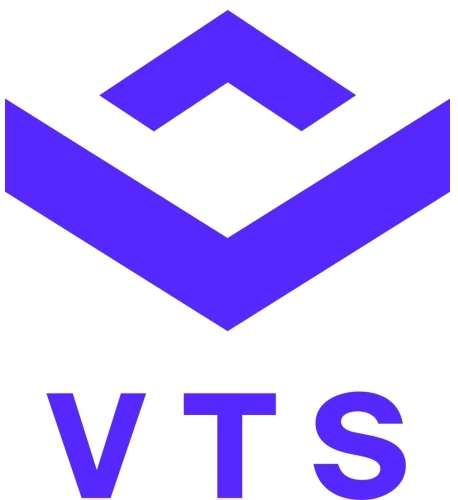
Introduction
Learn about HTTP security headers and their importance in web application security in this article. Understand their usage, their role in improving data privacy and mitigating cyber threats, and get practical tips for their proper implementation.
What is HTTP?
The internet operates like a complex maze filled with countless interactions between clients (such as your computer) and servers (which host the websites you visit). To manage these interactions efficiently, we need standardised protocols for communication. This is where HTTP (Hypertext Transfer Protocol) comes in. HTTP defines a set of rules for how clients and servers communicate.
One key component of HTTP that facilitates this client-server communication are HTTP headers. These headers are metadata tags that carry important information about the requests sent by the client and responses returned by the server. Headers provide instructions and context that guide the transmission and handling of data between parties. Within the HTTP header family, there is a specific group known as security headers. As their name suggests, these headers focus on enhancing the security of client-server communication. Security headers transmit key instructions to the client, like your browser, dictating how it should handle interactions with servers in a secure manner.
Common HTTP Security Headers
Below we’ll go over eight significant HTTP security headers, detailing their function and providing examples of their usage.
| Header | Description | Example |
|---|---|---|
| Strict-Transport-Security | Forces browsers to use HTTPS for the domain and all subdomains. Prevents man-in-the-middle attacks by ensuring secure connections only. The max-age directive specifies how long the browser should remember to enforce HTTPS. | Strict-Transport-Security: max-age=31536000; includeSubDomains | Content-Security-Policy | Mitigates cross-site scripting (XSS) attacks by whitelisting allowed sources for scripts, stylesheets, images etc. Default-src defines fallback policy if a resource type is not defined. Script-src specifies valid sources for JavaScript. | Content-Security-Policy: default-src 'self'; script-src 'self' https://apis.google.com |
| X-Content-Type-Options | Stops browsers from interpreting files as anything other than declared MIME type. Prevents attacks like MIME confusion which can make browsers execute malicious scripts disguised as images. | X-Content-Type-Options: nosniff |
| X-Frame-Options | Prevents clickjacking attacks by prohibiting embedding of web pages in iframes. Options are DENY, SAMEORIGIN or ALLOW-FROM. | X-Frame-Options: DENY |
| X-XSS-Protection | Enables browser's built-in cross-site scripting filter. The filter can sanitise malicious input or block rendering of pages. | X-XSS-Protection: 1; mode=block |
| Public-Key-Pins | Associates cryptographic public keys with a web server to prevent man-in-the-middle attacks. Pinning helps detect certificate authority compromises. | Public-Key-Pins: pin-sha256="base64+primary=="; max-age=5184000; includeSubDomains |
| Access-Control-Allow-Origin | Specifies origins allowed to access resources via cross-origin requests. Prevents unauthorised access by external sites and APIs. | Access-Control-Allow-Origin: https://example.com |
| Access-Control-Allow-Methods | Defines HTTP methods allowed for accessing resources, like GET, POST, PUT etc. Prevents unsafe HTTP methods. | Access-Control-Allow-Methods: GET, POST, PUT |
Why HTTP Security Headers Matter
In general, security headers are an essential component in protecting web applications from common vulnerabilities and threats. Their importance is underscored through the following reasons:
- Enhanced Data Privacy and Security: Security headers such as Strict-Transport-Security enforce the use of secure connections. This ensures that data transmitted between the server and client is encrypted and secure, thereby enhancing the privacy and overall security of the data.
- Prevention of Attacks: Security headers like X-XSS-Protection and Content-Security-Policy are instrumental in preventing various types of attacks. These headers can protect against cross-site scripting (XSS), clickjacking, and code injection attacks, which are common threats to web application security.
- Control Over Your Content: Headers such as X-Frame-Options and X-Content-Type-Options provide control over how your content is used and shared across websites. These headers can dictate who can embed your content, providing an additional layer of control and security.
- Trust and Compliance: Proper implementation of security headers can foster trust with your users, as it demonstrates a commitment to maintaining high security standards. Additionally, these headers can aid in achieving compliance with various security standards and regulations, a crucial aspect for businesses in regulated industries.

Best Practices for Using HTTP Security Headers
In order to optimise the use of HTTP security headers, consider some of these best practices:
- Take an Incremental Approach: Adding many new headers at once can potentially break things. Roll out changes gradually, testing thoroughly. Start with the most impactful headers for your application.
- Use Security Scanners: Various tools are available that can scan your website for missing or improperly configured security headers. Utilising such tools can help identify potential weaknesses in your security configuration (FractalScan can do this).
- Avoid Over-Reliance on Security Headers: While security headers are a vital part of web security, they are not a panacea. It’s essential to follow other best practices, such as secure coding, regular patching of vulnerabilities, and proper access controls. A multi-faceted approach to security is always the most effective strategy.
- Test Before Deploying: Prior to deploying new headers to your production site, always test them in a controlled environment. This precaution can help identify and mitigate any unintended side effects that could impact your website’s functionality or performance.
Wrapping Up
HTTP security headers are critical for securing web applications. Properly configured headers like Strict-Transport-Security and Content-Security-Policy prevent common attacks including cross-site scripting, code injection, and man-in-the-middle exploits.
Companies must continuously evaluate and update header policies to address emerging threats. Utilise scanning tools to identify gaps, and test updated policies before deployment.
Headers provide protection, but are only one part of a layered security strategy. Comprehensive programs also incorporate input validation, patching, penetration testing, and other controls.
In summary, well-implemented security headers demonstrate commitment to security best practices and aid regulatory and standards compliance.
Find Out How FractalScan Can Help You
FractalScan makes securing your external attack surface simple through automated discovery and continuous monitoring of your header hygiene.
With FractalScan you can:
- Discover all Internet-exposed attack surfaces
- Prioritise remediation based on severity of gaps
- Continuously monitor header coverage as changes are made
- Generate reports demonstrating security improvements
Proper security headers serve as an invaluable first line of defence. See how FractalScan can provide unparalleled visibility into the state of your headers with our free account.





